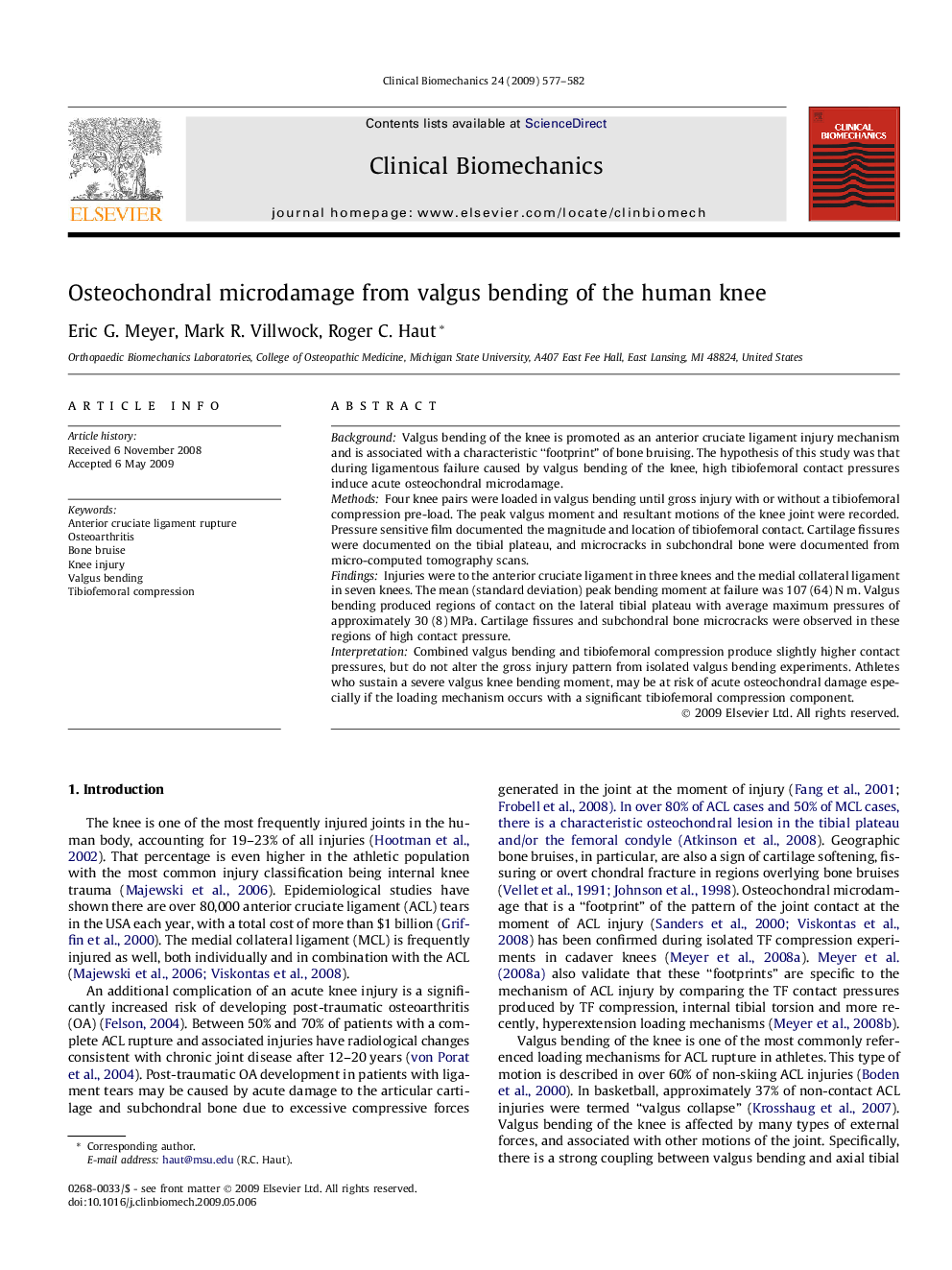| Article ID | Journal | Published Year | Pages | File Type |
|---|---|---|---|---|
| 4051101 | Clinical Biomechanics | 2009 | 6 Pages |
BackgroundValgus bending of the knee is promoted as an anterior cruciate ligament injury mechanism and is associated with a characteristic “footprint” of bone bruising. The hypothesis of this study was that during ligamentous failure caused by valgus bending of the knee, high tibiofemoral contact pressures induce acute osteochondral microdamage.MethodsFour knee pairs were loaded in valgus bending until gross injury with or without a tibiofemoral compression pre-load. The peak valgus moment and resultant motions of the knee joint were recorded. Pressure sensitive film documented the magnitude and location of tibiofemoral contact. Cartilage fissures were documented on the tibial plateau, and microcracks in subchondral bone were documented from micro-computed tomography scans.FindingsInjuries were to the anterior cruciate ligament in three knees and the medial collateral ligament in seven knees. The mean (standard deviation) peak bending moment at failure was 107 (64) N m. Valgus bending produced regions of contact on the lateral tibial plateau with average maximum pressures of approximately 30 (8) MPa. Cartilage fissures and subchondral bone microcracks were observed in these regions of high contact pressure.InterpretationCombined valgus bending and tibiofemoral compression produce slightly higher contact pressures, but do not alter the gross injury pattern from isolated valgus bending experiments. Athletes who sustain a severe valgus knee bending moment, may be at risk of acute osteochondral damage especially if the loading mechanism occurs with a significant tibiofemoral compression component.
